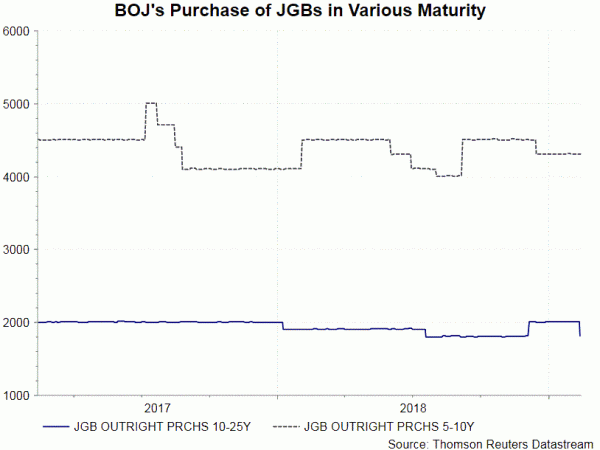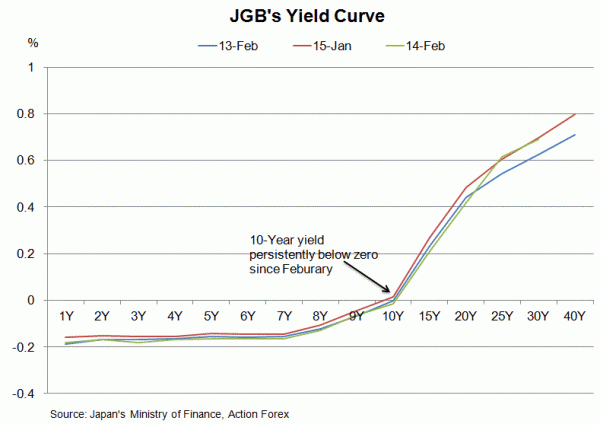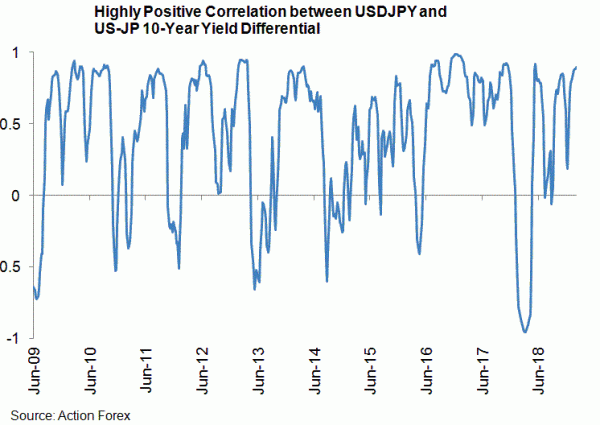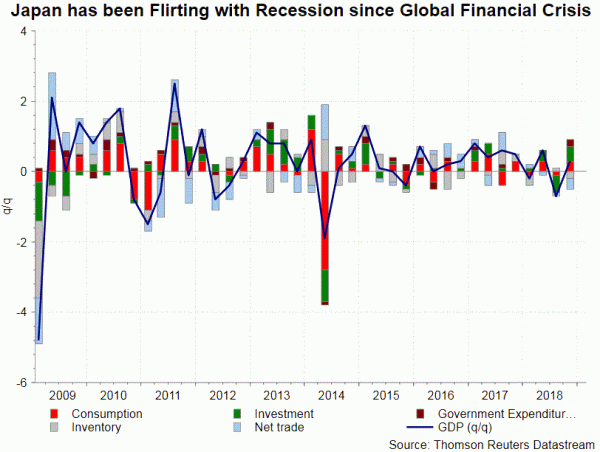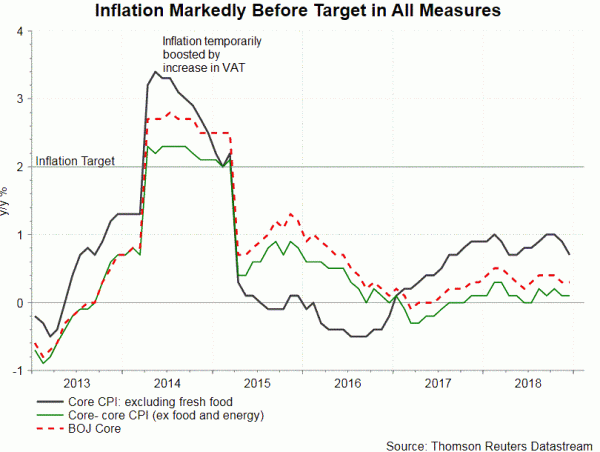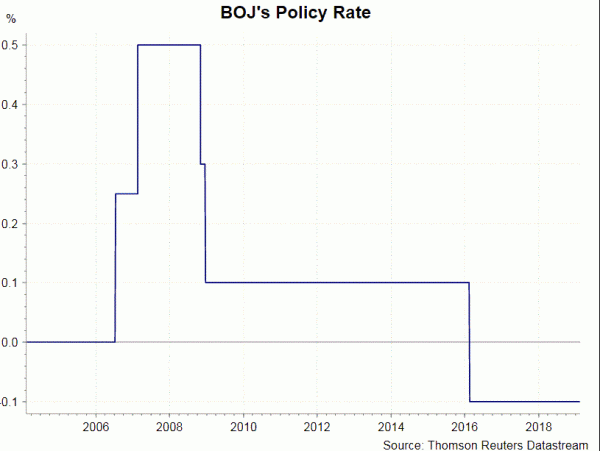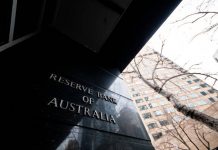BOJ’s asset purchase activities have again caught market attention. Talks of tapering heightened last week as the central bank offered to buy 180B yen of 10- to 25-year JGBS. Concerns over a less accommodative monetary environment eased as the central bank offered to buy 430B yen of 5- to 10- year JGBs today. BOJ’s asset purchase program does affect the movement of Japanese yen, given the high correlation between USDJPY and the differential of corresponding Treasury yields. As Japan continues to struggle with achieving the inflation target, while risks of falling back to recession remains genuine, the central bank should stick to ultra accommodative monetary policies. Any reduction in asset buying would likely be adjustment to yield curve control.
Japan again avoided recession as GDP growth rebounded to an annualized +1.4% q/q in 4Q18, following a -2.5% contraction in the prior quarter. The biggest drivers of growth in the past quarter were capital expenditure and consumption. In the aftermath of 2007/08 global financial crisis, Japan fell into technical recession- two consecutive quarters of negative economic growth- thrice, and recorded negative growth in 2Q14, 4Q15, 1Q18 and 3Q18. Meanwhile, inflation has remained weak. As the government kicks off the new VAT, up from 8% to 10%, in October 2019, personal consumption would worse off, dampening GDP growth. Whether inflation would be boosted by higher VAT remains uncertain. Despite the fact that inflation spiked in 2014 as the government raised the VAT from 5% to 8%, the case this time might not be the same. Meanwhile, the inflationary effect of VAT rise would only be temporary and would not help on the longer-term inflation outlook.
BOJ’s existing monetary policy tools include keeping policy rate at -0.1%, purchasing JGBs at a pace of 80 trillion yen/ year and yield curve control -keeping 10-year JGB yield at 0%, with trading band at +0.2% and – 0.2%. The fragile domestic economic backdrop, together global economic slowdown, suggests that BOJ would have no choice by retain the current ultra-accommodative monetary policy. Testifying before the Parliament, Governor Haruhiko Kuroda pledged that it’s his responsibility to achieve the +2% inflation target. Indeed, the central bank is in a dilemma in keeping the policy rate low. In theory, low interest rates are stimulus for growth. In the case of Japan, the low rate environment has encouraged FX carry trades using Japanese yen as the funding currency, sending yen higher during risk-averse period. A strong yen is detrimental for the country’s exports. While we are not convinced that the current sets of monetary policy would help the country get out of disinflation, it appears that there’s not much the central bank can do.




